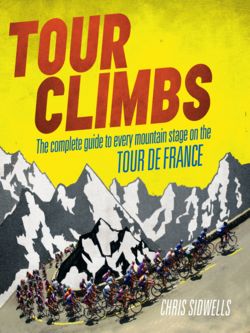Читать книгу Tour Climbs: The complete guide to every mountain stage on the Tour de France - Chris Sidwells - Страница 14
How it works
ОглавлениеThe Tour de France is big, and it’s getting bigger with a prosperous and exciting future ahead of it, but it is a race that is firmly rooted in tradition. It has always been what in cycling is called a stage race. That is a race decided on total time to complete the whole course, but with the course broken up into individual stages. The rider who completes the whole course in the least time is the overall winner, and at any given point after the first stage the race has an overall leader who wears the yellow jersey.
Most of the stages are straightforward races. They are referred to as road stages, where all the riders start together and the first over the line wins the stage. A few stages are time trials; riders start individually at intervals and the one who covers the course on his own in the fastest time wins the stage. Team time trails work on the same principle, but the individual teams complete the course together and their times are added to each team member’s overall time for the race.
The Alpe d’Huez all-day Tour party © Luc Claessen
Soon after the first editions were run, the Tour de France settled into a pattern that is preserved today. It usually occupies the first three weeks of July, which covers the time that French people traditionally take their summer holidays. Since 1967 it has started with a short prologue time trial, which provides some order for the first few stages. The prologue winner wears the yellow jersey on the first road stage.
Most years see the first few stages run off over flat to undulating countryside, giving riders who don’t shine in the mountains the chance for some glory. A longish time trial comes after this first phase, and then the mountains. To win the Tour de France a rider must be good at the time trials, but he must also excel in the mountains. He certainly can’t be a specialist in one to the exclusion of the other, although many Tour winners have leant towards one or other speciality.
Since they were first visited, the Alps and Pyrenees have been included in every race and the Tour tries to visit the Vosges and Massif Central whenever it can. The race always finishes in Paris, and the others stage towns and cities are decided by geography and by the various municipalities pitching to be hosts. Many places, including towns and cities in neighbouring countries, want to be visited by the Tour. Each year the organisers have a notional idea of where they would like to go, what climbs they would like to include, then they look at who wants the race and come up with a route.
The first long time trial and the first day in the mountains are when the Tour de France begins to take shape each year. The riders and pundits say that while you cannot tell who will win in Paris after the first mountain stage, you can always tell who will not. A number of favourites invariably fall out of the running on this crucial day.
